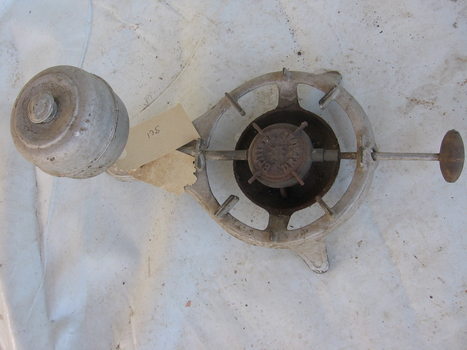Historical information
This portable stove was likely used in the early to mid-20th century for camping, emergency cooking, or small-scale kitchen use before modern gas and electric stoves became widespread.
Such stoves were popular among travellers, soldiers, and rural households, where permanent cooking facilities were not available.
The pressurized fuel system suggests it used kerosene, alcohol, or gas to create a controlled flame for cooking.
The sturdy cast iron or aluminum frame allowed it to support pots and kettles for boiling, frying, or heating food.
This type of stove design was an essential tool for survivalists, campers, and households in areas without electricity.
Physical description
The item is a single-burner portable stove, likely powered by kerosene, gas, or alcohol, commonly used for camping, emergency cooking, or small kitchen setups. It consists of:
A circular metal frame with three stabilizing legs, designed to support a pot or pan over the burner.
A central burner unit with a small rusted cast iron or brass burner head, which has multiple gas outlets or jet holes for controlled flame distribution.
A fuel tank on the left side, likely made of aluminum or tin-plated steel, connected to the burner by a fuel line. The tank appears to be pressurized, meaning it may have used a hand-pump system for fuel delivery.
A control valve with a round metal knob on the right, used to regulate the flow of fuel to the burner.
The surface is worn and oxidized, showing signs of use and exposure to heat and fuel residues.

